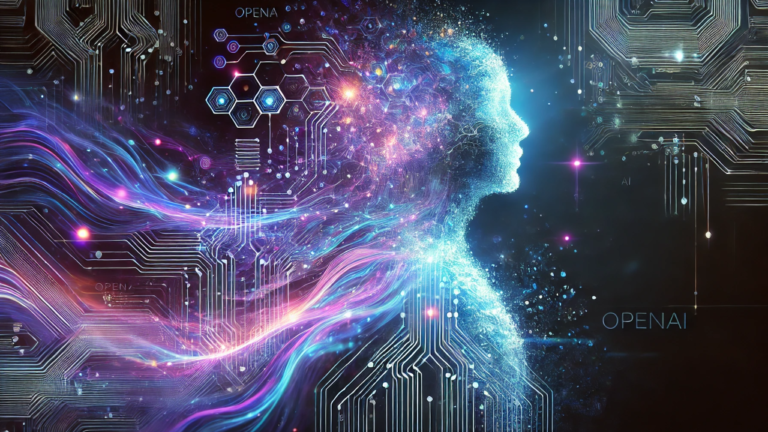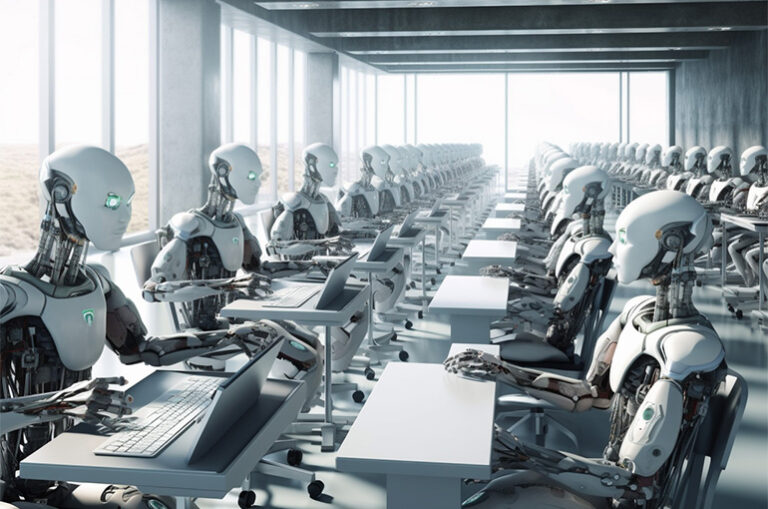
Thanks to a new breed of chatbots, American stupidity is escalating at an advanced pace
The Silent Collapse: How AI Became Education’s Worst Kept Secret
Once hailed as the savior of 21st-century education, AI in classrooms was supposed to level the playing field—giving every student instant access to a personal tutor. Fast forward to today, and it’s not empowerment that defines the AI-education relationship—it’s plagiarism, laziness, and academic decay.
The promise of chatbots like ChatGPT, Gemini, and Claude was noble. But their real-world deployment? A disaster in disguise. AI is no longer a learning tool—it’s a crutch. Students are outsourcing thinking to machines, and teachers are struggling to detect the difference.
The Cheating Epidemic Nobody Wants to Talk About
Welcome to AI-enhanced stupidity—a paradox where students appear smarter on paper while understanding less than ever before.
In a recent survey by the Center for Academic Integrity, over 60% of students admitted to using AI tools to complete homework or essays. These aren’t just spell checks or grammar aids—these are full essays, math solutions, even discussion responses.
Forget copying from a friend; today’s student just pastes the prompt into a chatbot and gets back a polished, original answer in seconds. It’s untraceable, undetectable, and deeply corrosive.
Teachers Are Losing the Battle
Educators are caught in a storm they can’t weather. Tools like Turnitin or GPTZero try to identify AI-written content—but they’re wildly inconsistent. Worse, many school boards have no clear AI policy. So teachers do what they can: turn a blind eye, or fight a losing war.
“I spend more time trying to catch cheaters than actually grading,” says one high school English teacher from Ohio. “The worst part? Some students don’t even try to hide it anymore.”
From Critical Thinking to Prompt Engineering
Instead of learning how to argue, calculate, or write, today’s students are mastering a new skill: prompt engineering. They’re learning how to talk to AI, not how to think.
Ask a college freshman to write a persuasive essay, and chances are the chatbot wrote it. Ask them to explain their reasoning? Radio silence.
What we’re seeing isn’t just a tech shift—it’s a cognitive collapse. AI tools reward speed and output, not understanding. The result? Students become parrots for machines.
AI Tools Are Replacing Tutors—But Not in a Good Way
EdTech startups are racing to embed AI in everything—flashcard apps, virtual tutors, lesson planners. On the surface, this seems helpful. But it’s also making real learning optional.
Apps like Socratic, Quizlet, and Photomath now solve entire problems with a single snap. Why struggle to learn algebra when your phone can solve it instantly?
The convenience is irresistible—but the long-term damage is severe. Students are forgetting how to solve, how to reason, and how to struggle—key components of deep learning.
Parents Are Clueless, Schools Are Powerless
The average parent sees AI tools as a helpful assistant, not a threat. But their kids aren’t using ChatGPT to explore deeper understanding—they’re using it to do less.
Meanwhile, schools are scrambling. Some try banning AI outright (a laughable solution), while others quietly accept its inevitability. A few are creating AI-integrated lesson plans—but without proper regulation or pedagogy, it’s like building a plane mid-flight.
Who Benefits From This Decay? Big Tech.
Let’s not pretend this is accidental. The ed-tech gold rush is powered by venture capitalists and Silicon Valley behemoths eager to sell AI “solutions” to every classroom. But what’s being sold isn’t education—it’s automation.
AI companies position themselves as champions of democratized learning, but they thrive on dependency. The more students rely on AI to complete basic tasks, the more profitable the model becomes.
What Happens When AI-Dependent Students Graduate?
Today’s chatbot-dependent high schoolers will be tomorrow’s employees, leaders, and voters. What happens when an entire generation can’t write a coherent email without help?
Already, companies are reporting that entry-level employees are unable to complete tasks independently. “They panic without AI,” said one HR manager at a tech firm. “It’s like they’ve never learned to think critically.”
A Curriculum Without Soul
Even well-meaning schools that adopt AI responsibly risk turning education into a soulless transaction. A student gives a prompt, gets a response, and moves on.
Where’s the creativity? The curiosity? The debate?
In traditional learning, you grapple with the material. You fail, adjust, and grow. But AI erases that struggle. It’s all answer, no process.
And in that erasure, education loses its meaning.
The Road Ahead: What Needs to Change
If we want to save the next generation from digital decay, we need bold reforms:
- AI Detection Must Improve
Open-source AI detectors need to evolve to track not just content patterns, but usage habits. - New Grading Models
Move beyond essays and tests. Use in-person debates, oral exams, and problem-solving interviews. - AI Literacy Classes
Teach students how to use AI ethically and intelligently—not as a shortcut, but as a partner. - Policy Enforcement
Federal and state education boards must issue clear guidelines on AI use, misuse, and penalties. - EdTech Regulation
Hold AI education companies accountable for their impact on cognitive development.
Conclusion: A Nation at Risk—Again
Forty years ago, the U.S. published a famous report titled A Nation at Risk, warning that poor education threatened America’s future.
Today, we’re in a new crisis—but this time, the enemy isn’t underfunding or bad textbooks.
It’s AI.
Not because it’s evil, but because we’re using it wrong. And unless we course-correct fast, we’ll be raising a generation of prompt typers instead of problem solvers.
The tools meant to make us smarter might be the very ones making us dumber. And it’s happening breathtakingly fast.




The website design looks great—clean, user-friendly, and visually appealing! It definitely has the potential to attract more visitors. Maybe adding even more engaging content (like interactive posts, videos, or expert insights) could take it to the next level. Keep up the good work!